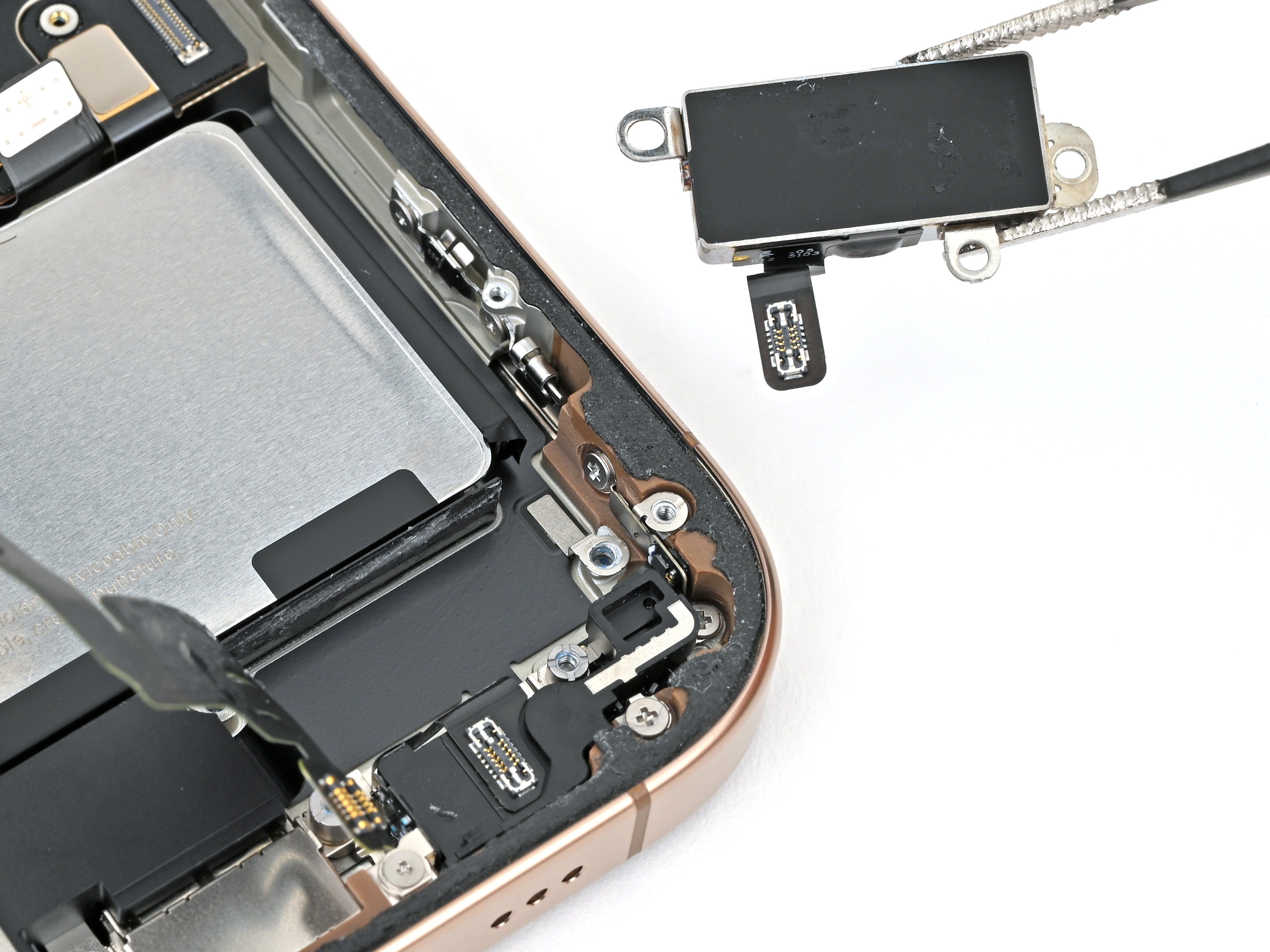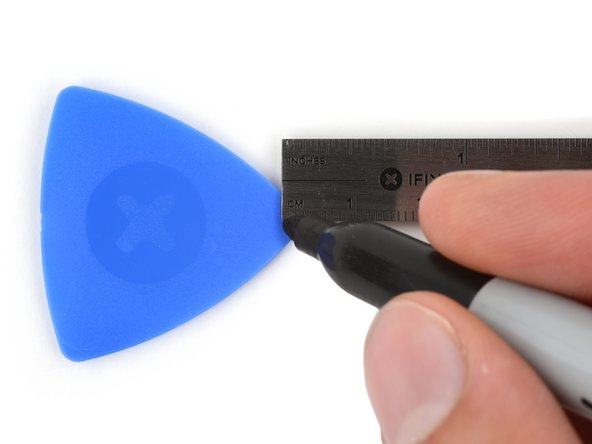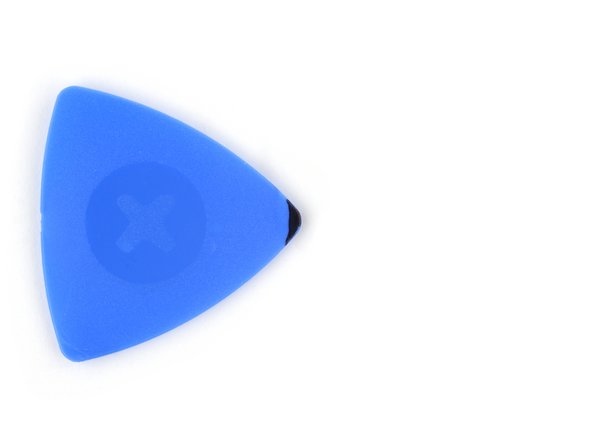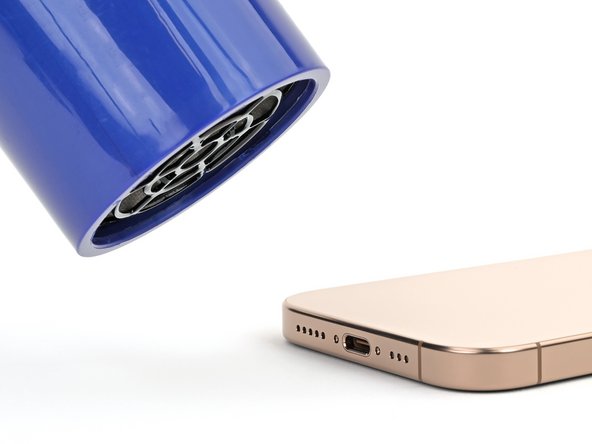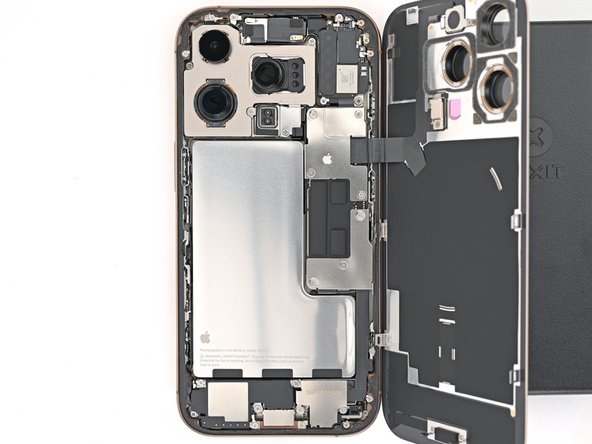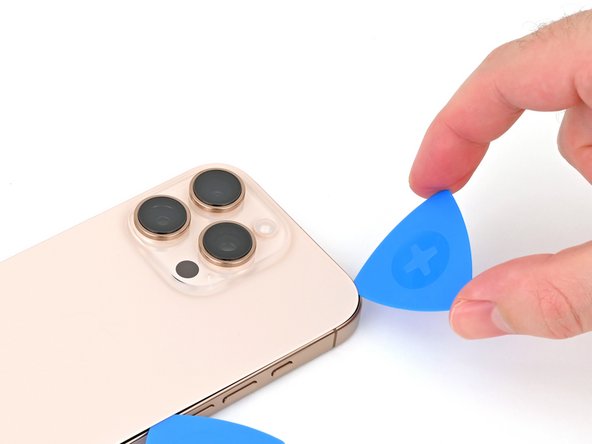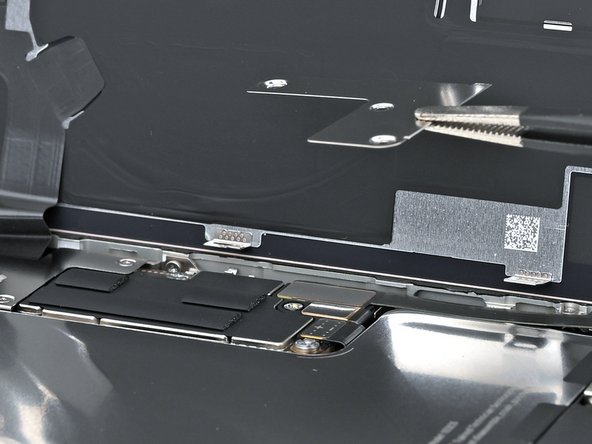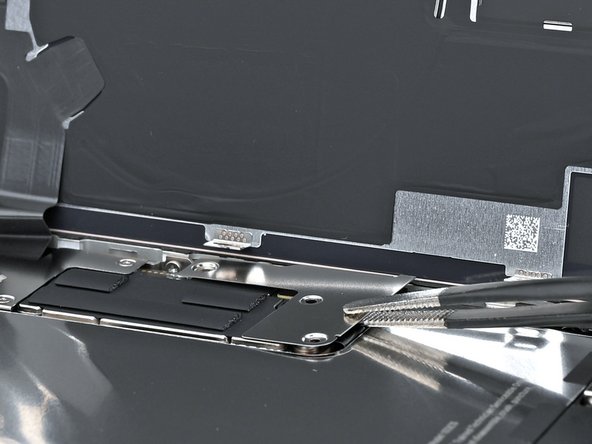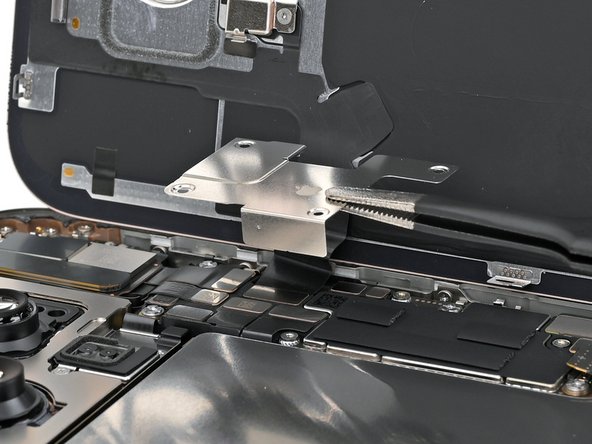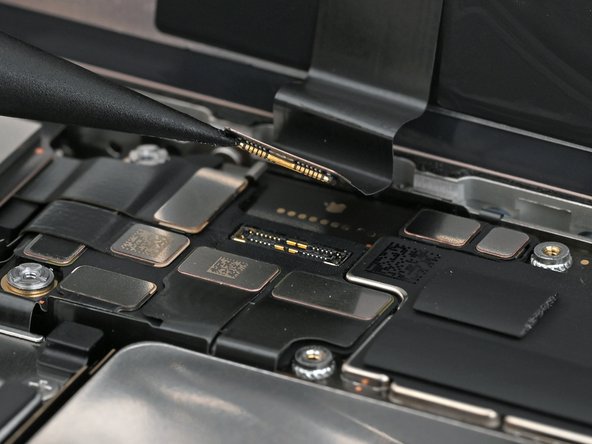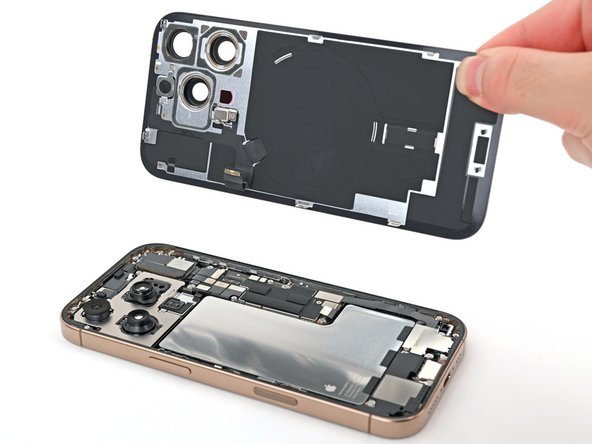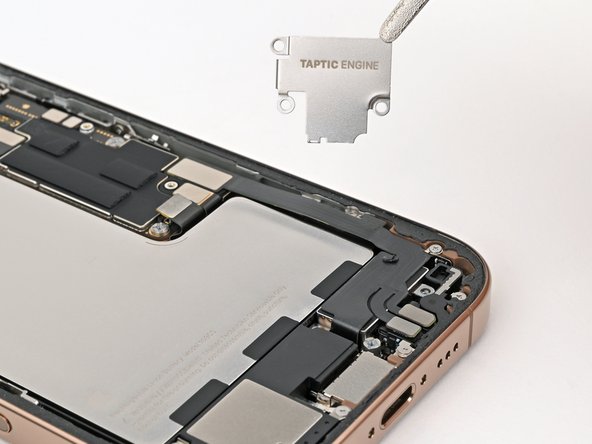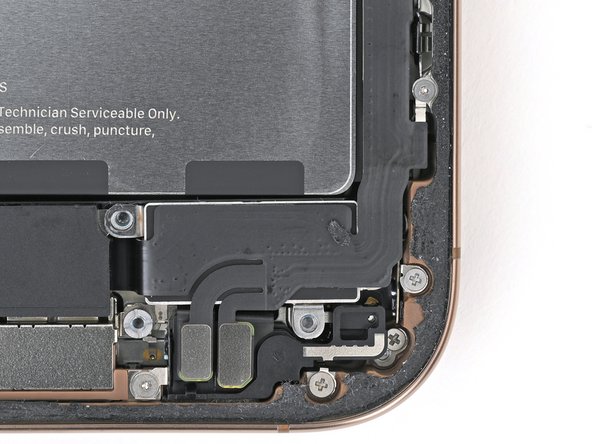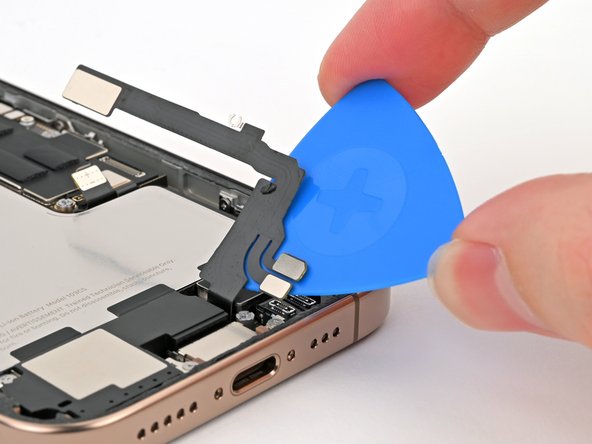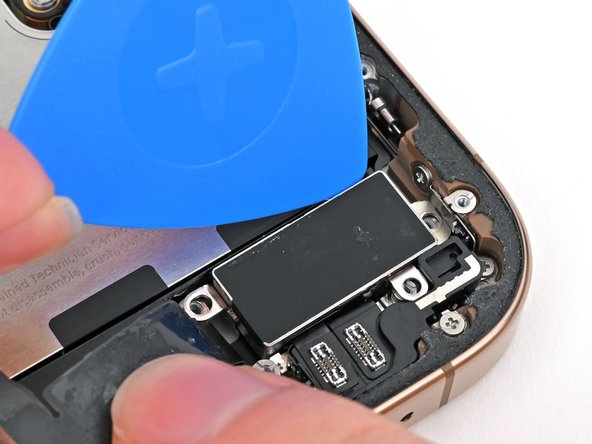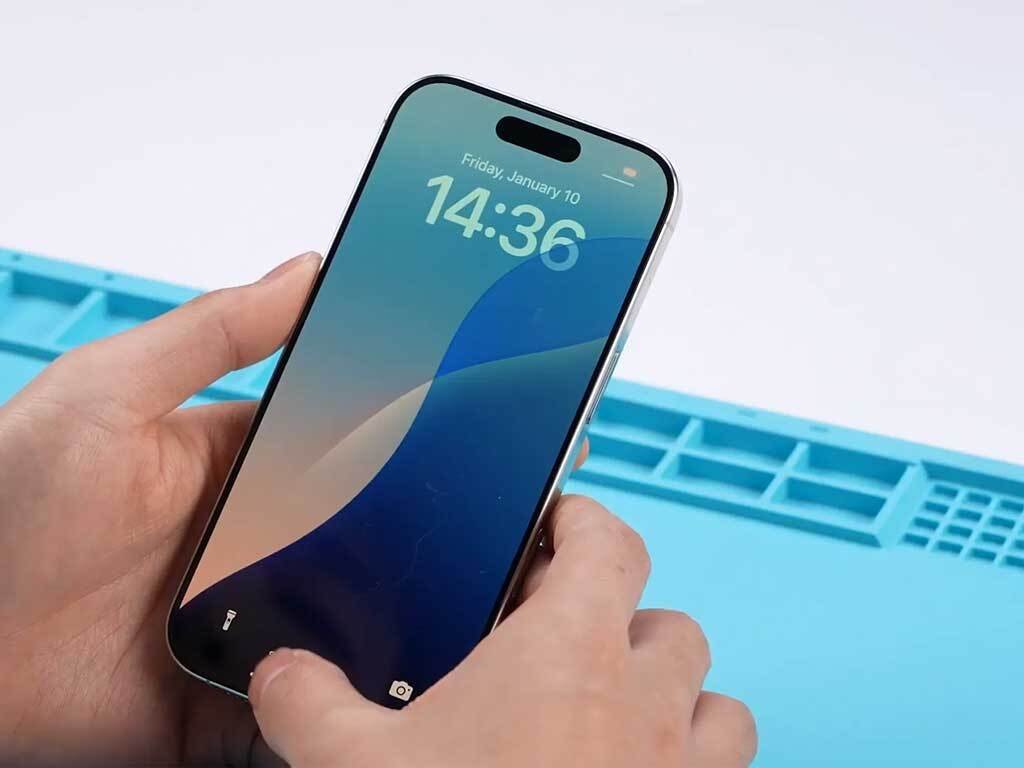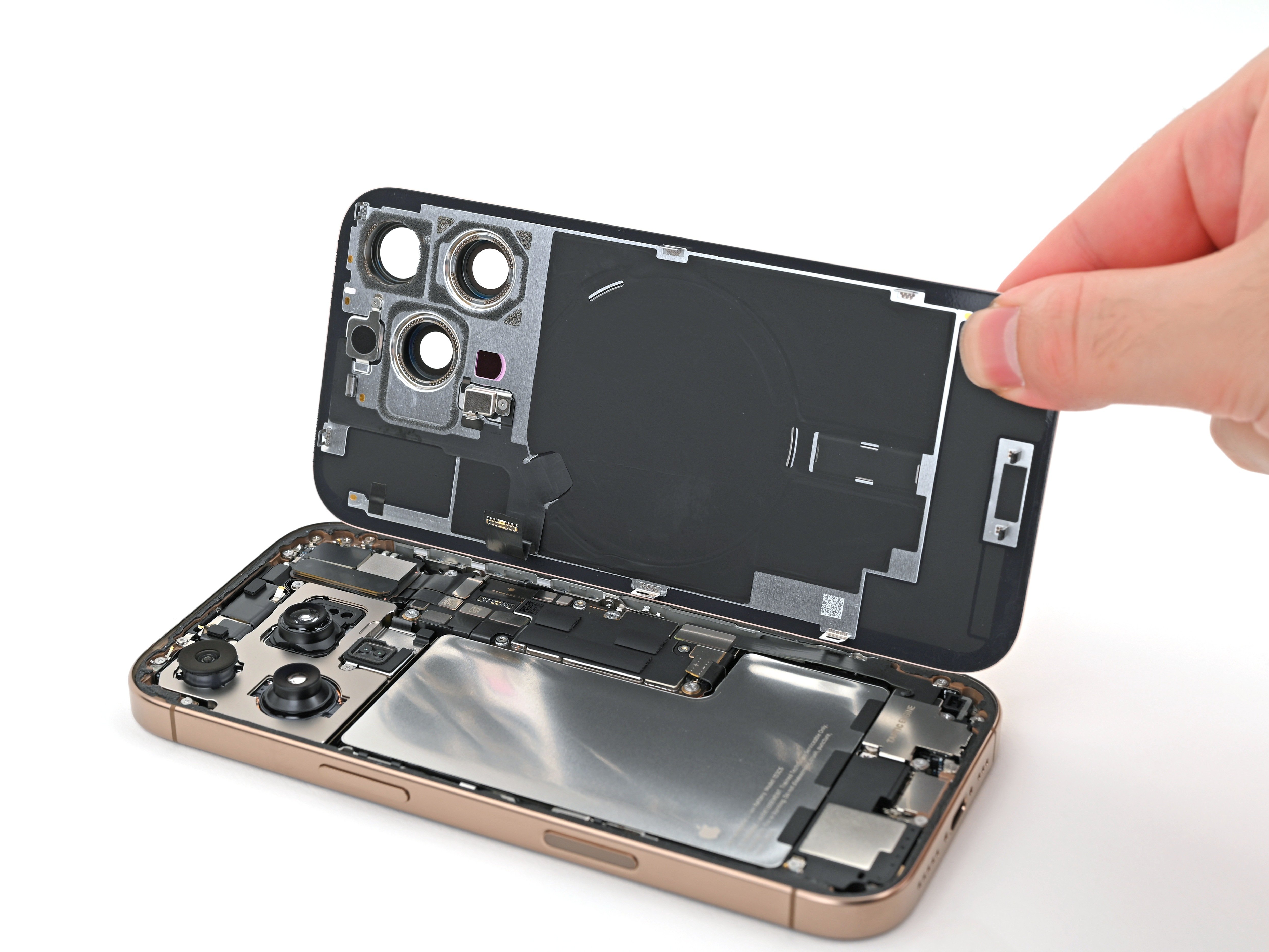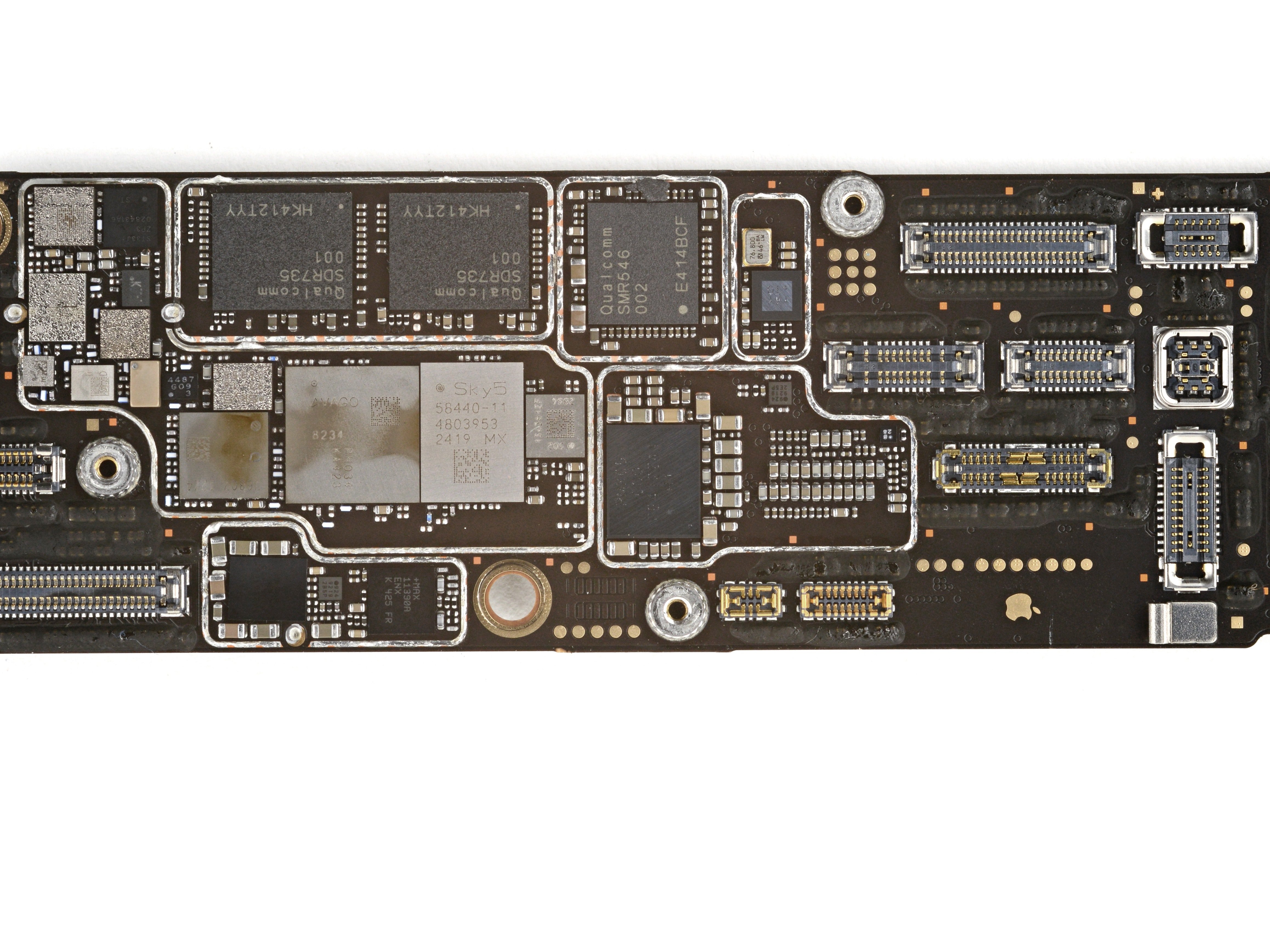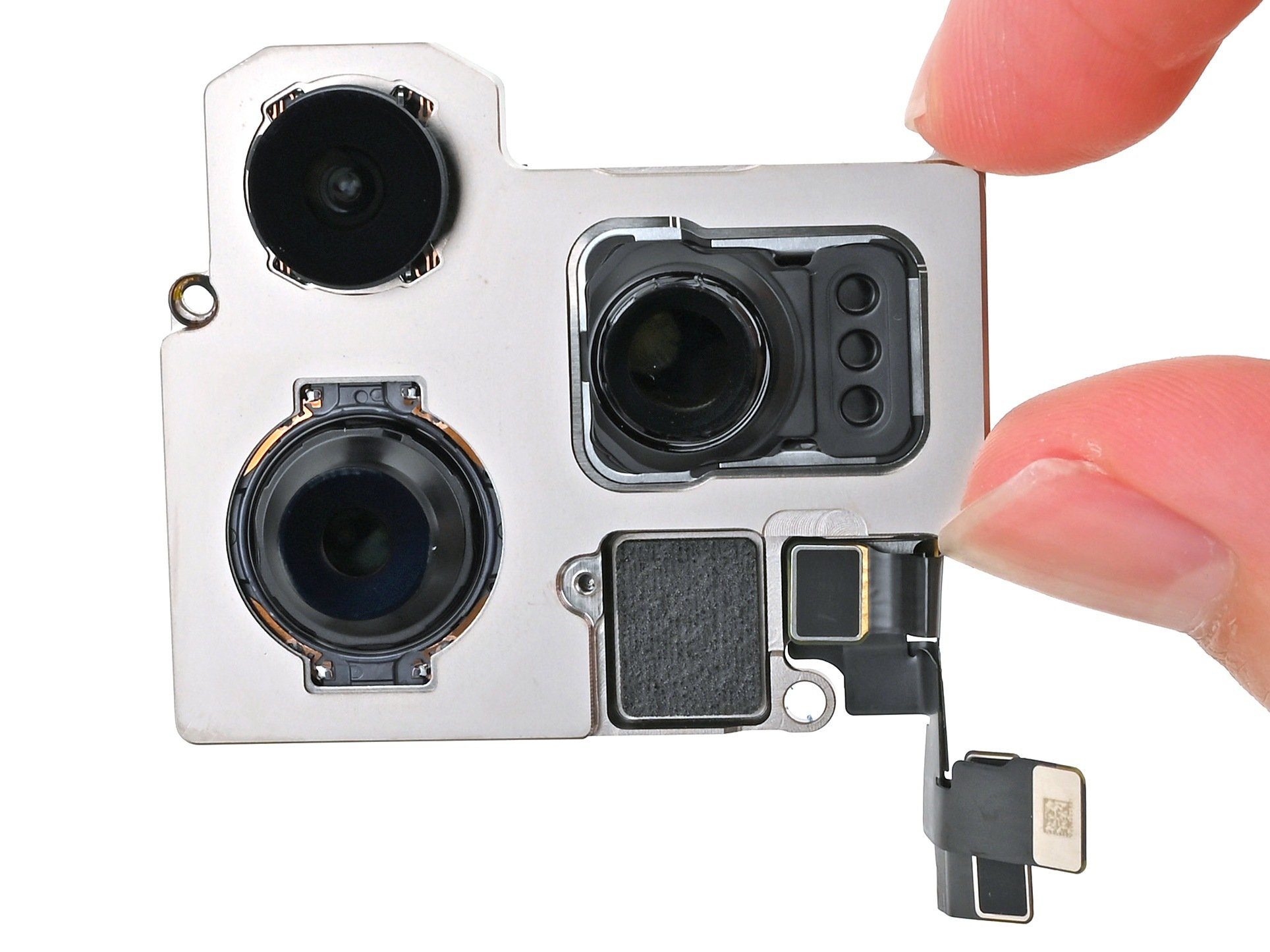iPhone 16 Pro Taptic Engine Replacement
Duration: 45 minutes
Steps: 32 Steps
Use this guide to swap out the Taptic Engine in your iPhone 16 Pro. If your phone’s vibrations are weak or have gone silent, replacing the Taptic Engine is likely the fix. Make sure you have replacement back glass adhesive handy to wrap up this repair.
Step 1
Let your phone’s battery dip below 25%—a fully charged lithium-ion battery could be a safety concern. Keep it chill, and don’t let it stay at 100% for too long.
- First, unplug all cables from your phone. It's time to free your phone from any connections.
- Now, press and hold the power button and either of the volume buttons, then slide to turn off the phone. Give it a moment to shut down, just like when you take a break.
Step 2
Find a nice flat spot near the bottom edge where your suction cup can get a good grip.
- If the screen or back glass is severely cracked, grab some packing tape and cover the glass with a few overlapping strips. This will keep you safe and make taking things apart a little smoother. Always better to play it safe!
Tools Used
Step 3
Pushing your opening pick in too deep can cause damage—so let's keep it safe by marking the pick before you start.
Feel free to mark the other corners with different depths to keep things precise.
Another neat trick is taping a coin about 3 mm from the pick’s tip as a handy depth guide.
- Grab your trusty permanent marker and measure 3mm from the tip. Mark that spot on the opening pick. Precision is key, but don't stress—just a little mark is all you need!
Step 4
- Grab your trusty P2 pentalobe screwdriver and carefully take out the two 7.4 mm screws flanking the USB-C port. Easy does it!
Step 5
Keep the phone warm, but not sizzling—batteries like it cozy, not toasty!
You could also grab a hair dryer or a heat gun and warm up the bottom edge of the back glass until it's nice and toasty!
- Place a warm iOpener on the bottom edge of the back glass and let it work its magic for two minutes.
Tools Used
Step 6
- Stick a suction handle near the bottom edge of the back glass, right above the USB-C port.
- Give the handle a firm, steady tug to gently create some space between the back glass and the frame.
- Slide the tip of an opening pick into the gap you've made.
Tools Used
Step 7
While slicing through the adhesive holding the back glass in place, watch out for these spots—they can be a bit tricky!
If the spring contacts get a little bent out of shape, carefully nudge them back into place using a spudger or opening pick so they line up perfectly with their gold contact pads on the back glass.
- There's a sensitive cable connecting the back glass to the phone, right next to the volume up button. Be careful not to stick your pick in here, or you might end up slicing that cable!
- Around the phone's perimeter, you'll find several spring contacts. Take it easy and don't push your pick too deep to avoid bending these little guys. They're delicate!
Tools Used
Step 8
Keep your pick at a gentle 5 mm depth along the bottom edge—no need to dig too deep, we don't want to mess with the spring contact!
- Gently wiggle your pick side to side along the bottom edge to loosen that stubborn adhesive.
- Keep your pick wedged in the bottom right corner to stop the adhesive from snapping back together.
Step 9
- Warm up the right edge of the back glass until it feels nice and toasty.
Step 10
Steer clear of slicing near the volume buttons—it's a no-go zone! We want to keep that wireless charging/flash cable safe and sound.
- Glide your pick around the bottom right corner and up the right side until you hit a clip holding the back glass—don't force it, you'll feel when it's time to stop.
- Leave your pick chilling in place so the adhesive doesn't sneakily stick back together.
Step 11
- Warm up the left edge of the back glass until it feels nice and toasty.
Step 12
As you slide along, you’ll hear the metal clips pop and feel them give way. It’s a satisfying little ‘click’ parade.
- Pop in a second opening pick at the bottom edge, and let the fun begin!
- Gently glide that second pick around the bottom left corner and up the left edge of the screen to break free the adhesive and pop those metal clips out. You're doing great!
- Keep this pick snugly in place at the top left corner to keep the adhesive from playing tricks and sealing back up. You're almost there!
Step 13
- Warm up the top edge of the back glass, especially around the volume buttons, until it feels nice and toasty to the touch.
Step 14
Keep your pick no deeper than 3 mm along the top edge to dodge any spring contact drama.
Get ready to hear and feel a couple of satisfying clicks as those top two clips pop free.
- Gently slide your opening pick along the top edge and curve it around the top right corner up to the volume up button to loosen the adhesive.
Step 15
Hold up—don't yank that back glass off just yet! It's still connected by a fragile ribbon cable. Take a deep breath and follow the next few steps to safely detach it.
If the back glass is being stubborn and doesn't swing open easily, no need to muscle through it. Just go around the edges again with your pick to make sure you haven't missed any adhesive or clips that are still holding on.
A little pro tip: Use polyimide tape to shield the rear camera lenses while you're inside. And remember—don't press on those lenses. They’re delicate and need their space to work properly.
You might need to give the back glass a slight lift before swinging it open to make sure all the clips are fully free. Take it slow!
- Carefully swing the back glass open towards the volume buttons, like you're unveiling a surprise!
- Support that back glass with a clean, sturdy object, maybe a little box, to keep those cables happy and strain-free.
- Now, it's time to remove those opening picks and get on with the fun!
Tools Used
Step 16
- Grab your trusty tri-point Y000 screwdriver and get ready to tackle those screws! Unscrew the three fasteners holding down the lower connector cover:
- Two screws, each 1.2 mm long—these are your typical screws, no surprises here.
- One screw, 1.0 mm long—this little guy is just a bit smaller, but still important!
Tools Used
Step 17
- Grab some tweezers or just your fingers and gently lift off the lower connector cover—easy does it!
Tools Used
Step 18
- Pop up the battery connector with the tip of your spudger—like flipping a tiny switch.
- When it's time to put things back together, line up the connector with its socket and press down gently, first on one side, then the other, until you feel it snap in. Don’t force it—if it’s not cooperating, just lift it up, reposition, and try again. Smooth moves win the day!
Tools Used
Step 19
- Grab your trusty tri-point Y000 screwdriver and let's tackle those four screws holding down the upper connector cover:
- Two screws that are 1.0 mm long – easy peasy!
- One screw that's 1.2 mm long – just one more to go!
- And finally, one screw measuring 1.6 mm long – you're almost there!
Tools Used
Step 20
- Grab your tweezers or use your fingers to carefully lift off the upper connector cover. Nice and easy, you're almost there!
Tools Used
Step 21
- Gently use the tip of a spudger to lift and disconnect the back glass press connector. You've got this!
Tools Used
Step 22
- Gently lift the back glass off the frame and set it aside.
- While putting things back together:
- Now's a great time to give your repair a quick test run before sealing everything up. Temporarily reconnect the battery and the back glass (skip the adhesive for now), power up your device, and make sure it’s working. If all looks good, power down, disconnect the battery, and keep going.
- Follow this guide to reapply adhesive and secure the back glass.
Step 23
- Grab your trusty Phillips screwdriver and let's get those screws out! We need to remove the three screws holding down the Taptic Engine cover:
- One screw that's 3.0 mm long, just waiting to be freed.
- And two more that are each 1.7 mm long, ready to join the party!
Step 24
- Grab your trusty tweezers or just your fingers and gently lift the top edge of the Taptic Engine cover. You've got this!
- Once that bottom edge pops free from the frame, go ahead and remove the Taptic Engine cover like a pro.
- When it's time to put everything back together, make sure that bottom edge of the cover clicks snugly into the frame. You'll be all set!
Tools Used
Step 25
- Grab your trusty spudger and gently slide the tip underneath the lower assembly cable press connector. Give it a little lift to disconnect it from the logic board. You're doing great!
Tools Used
Step 26
- Grab your trusty spudger and use its point to gently lift up and disconnect the two press connectors near the bottom right edge of the frame. Take it slow, you got this!
Tools Used
Step 27
- Grab your tri-point Y000 screwdriver and take out the 1.0 mm screw holding down the lower assembly cable.
Tools Used
Step 28
- Grab your iOpener or a hair dryer and warm up the lower assembly cable area sitting on top of the Taptic Engine until it feels nice and toasty.
Tools Used
Step 29
- Gently slide an opening pick beneath the lower assembly cable to detach it from the Taptic Engine.
- Carefully maneuver the cable out of the way to gain access to the Taptic Engine.
Step 30
- Grab a Phillips screwdriver and carefully unscrew the 1.9mm-long screw that’s holding the Taptic Engine in place. Easy does it!
Step 31
- Gently slide the tip of your opening pick along the top edge of the Taptic Engine to carefully lift away the plastic buffer strip that's sticking to it.
Step 32
Don't go prying against the battery, it's more fragile than it looks!
- Now, just follow these steps in reverse to put your iPhone back together. It's as easy as taking it apart!
- Got some old tech laying around? Make sure it’s recycled properly by taking it to an R2 or e-Stewards certified recycler.
- Things didn't go as smoothly as you planned? Don't worry! Try some basic troubleshooting, or feel free to ask for help over at the iPhone 16 Pro Answers community.
-
